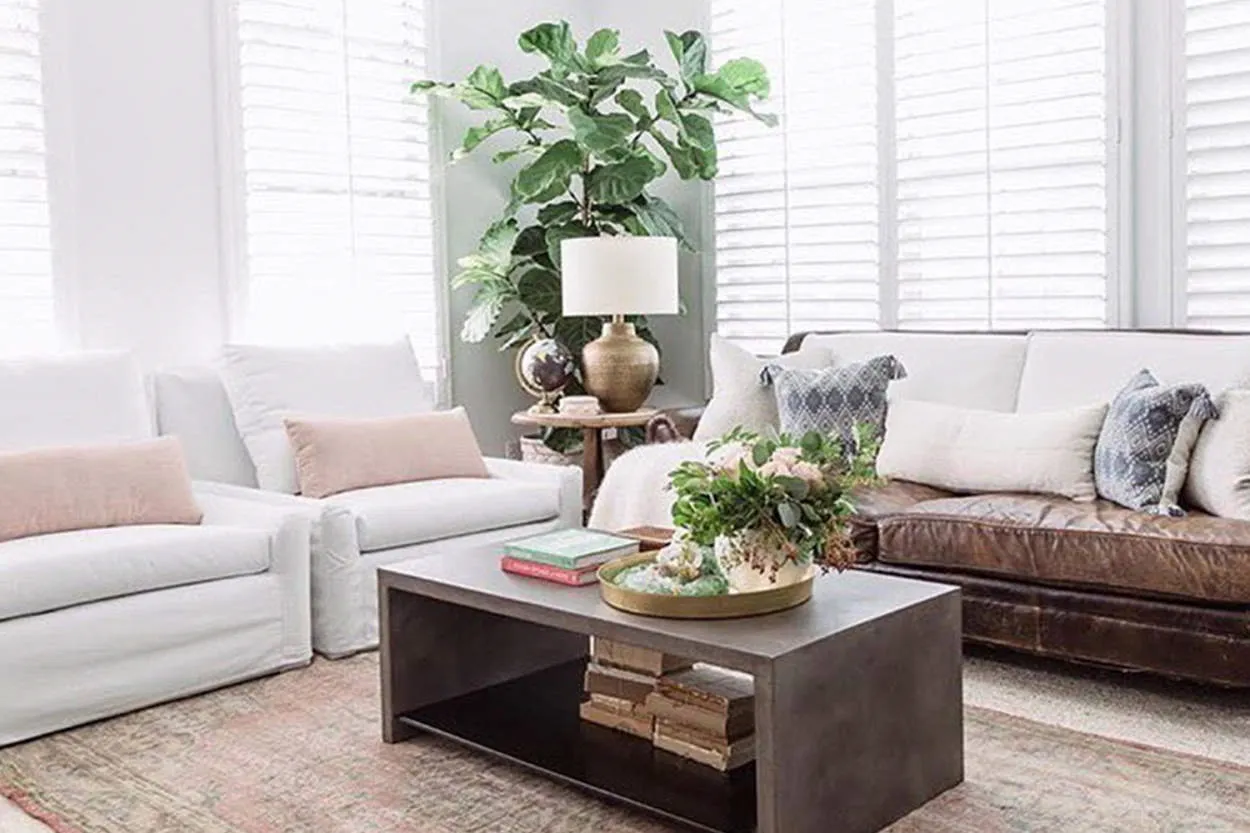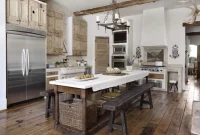Discover the art of creating harmonious living rooms with the principles of Feng Shui design. Explore how you can arrange furniture, choose colors, and incorporate elements to create a balanced and positive energy flow in your living space.
Feng Shui Basics for Living Rooms
In order to create a harmonious living room that promotes positive energy flow and balanced well-being, it is essential to incorporate the principles of Feng Shui design. Here are some key guidelines to follow:
1. Clear the Clutter
Decluttering is a fundamental step in Feng Shui. Keep your living room tidy by removing unnecessary items. Clutter can disrupt the flow of energy and create a sense of chaos.
2. Create a Balanced Layout
Arrange your furniture in a way that promotes a smooth and balanced flow of energy. Avoid blocking pathways or overcrowding the room. Optimize natural light and ensure all seating areas are easily accessible.
3. Choose Soothing Colors
Color plays a vital role in Feng Shui. Use calming and balanced colors, such as earth tones or soft shades, to create a serene atmosphere in your living room. Avoid overly bright or dark colors that can disrupt the energy flow.
4. Incorporate Natural Elements
Introduce natural elements like plants, crystals, or water features to enhance the positive energy in the room. Plants improve air quality and bring a sense of vitality, while water features symbolize abundance and calmness.
5. Balance Yin and Yang
Feng Shui principles emphasize the importance of achieving a balance between yin (passive energy) and yang (active energy). Incorporate both soft and strong elements in your living room, such as combining a comfortable sofa with a statement piece of artwork.
6. Enhance the Chi Flow
Chi, or life force energy, should flow freely throughout the space. Avoid sharp corners, as they can create stagnant energy. Instead, opt for rounded or curved furniture to promote a smooth and uninterrupted flow of chi.
7. Incorporate Personal Touches
Infuse your living room with sentimental objects or artwork that brings you joy and reflects your personality. Surround yourself with items that have positive energy and make you feel uplifted.
By following these Feng Shui basics, you can create a harmonious living room that promotes positive energy, balance, and well-being in your home.
Furniture Placement for Good Flow
Furniture placement plays a crucial role in creating a harmonious living room according to the principles of Feng Shui design. With the right arrangement, you can not only enhance the visual appeal of the space but also promote positive energy flow throughout the room. Here are some key tips to achieve good flow in your living room:
1. Create a Balanced Layout
Begin by arranging your furniture in a way that creates a balanced layout. Start with the main seating area, positioning the sofa and chairs to face each other. This arrangement encourages conversation and fosters a sense of unity among the occupants of the room.
2. Allow for Easy Movement
Ensure that there is enough space for easy movement around the room. Avoid cluttering the pathways with excessive furniture or accessories. Clear pathways facilitate a smooth flow of energy, allowing it to circulate freely without obstruction.
3. Maximize Natural Light
Make the most of natural light as it is considered an essential element in Feng Shui design. Position your furniture in a way that allows for an abundance of natural light to enter the room. Natural light not only brightens up the space but also creates a positive and uplifting atmosphere.
4. Choose Appropriate Colors
Colors play a significant role in Feng Shui. Opt for calming and soothing colors for your furniture to promote a harmonious ambiance. Earthy tones such as beige, brown, and green are recommended as they symbolize stability, grounding, and relaxation.
5. Incorporate Natural Elements
Add natural elements to your living room to create a sense of balance and connection with nature. Use indoor plants, stones, or wooden furniture to bring in the calming energy of nature. These elements not only enhance the aesthetics but also contribute to a peaceful and serene environment.
Color Selection for Harmony
In the world of interior design, color selection plays a crucial role in creating a harmonious living room that promotes a sense of balance and tranquility. Incorporating Feng Shui principles into the design process can further enhance the overall energy flow of the space.
When choosing colors for your living room, it is important to consider the five elements of Feng Shui: wood, fire, earth, metal, and water. Each element has its own associated colors, and a balanced combination of these colors is believed to create a harmonious environment.
Wood Element
Represented by the colors green and brown, the wood element brings vitality and growth to a room. These colors can be incorporated through natural wood furniture, plants, or earthy wall tones.
Fire Element
Red and shades of orange represent the fire element, which symbolizes passion, energy, and warmth. These colors can be introduced through accent pieces such as cushions, artwork, or decorative items.
Earth Element
Yellow and earthy tones symbolize the earth element, bringing stability and grounding to a space. These colors can be infused through wall paint, rugs, or natural stone elements in the room.
Metal Element
White and metallic colors represent the metal element, symbolizing clarity and precision. These colors can be introduced through furniture finishes, light fixtures, or metallic accents.
Water Element
Black and shades of blue embody the water element, representing calmness and relaxation. These colors can be incorporated through textiles, artwork, or decorative accessories.
By understanding the principles of Feng Shui and the color associations of each element, you can create a balanced and harmonious living room that promotes positive energy and well-being.
Incorporating Natural Elements
When it comes to designing harmonious living rooms using Feng Shui principles, incorporating natural elements is crucial. Natural elements such as plants, water features, and natural light are believed to bring positive energy and promote tranquility in the space.
One way to incorporate natural elements is by adding indoor plants. Not only do they add a touch of greenery, but they also purify the air and create a sense of calm. Choose plants with rounded leaves and avoid spiky or sharp-edged plants to maintain a peaceful environment.
Water features can also enhance the energy flow in the room. A small tabletop fountain or a wall-mounted waterfall can create a soothing ambiance and promote relaxation. The sound of running water can help to reduce stress and create a peaceful atmosphere.
In addition to plants and water features, natural light plays a vital role in Feng Shui design. Allow as much natural light as possible into the living room by removing heavy curtains or using sheer curtains. Natural light not only brightens the space but also lifts the energy and improves the overall mood.
Furthermore, incorporating natural materials such as wood, stone, and bamboo can enhance the connection with nature. Choose furniture made from these materials or add natural accents through decorative elements like bamboo blinds or stone sculptures.
By incorporating these natural elements into the living room’s design, you can create a harmonious and balanced space that promotes positive energy and well-being. Remember to arrange the furniture in a way that allows for easy flow of energy and declutter the space to maintain a peaceful environment.
Balancing Yin and Yang
In the realm of interior design, creating harmonious living spaces is a goal that many homeowners strive to achieve. One approach that has gained popularity is the application of Feng Shui principles. In particular, the concept of balancing Yin and Yang energies plays a significant role in creating a harmonious living room.
Yin and Yang are two opposing forces that exist in all aspects of life, including our living spaces. Yin represents passive, soft, and calming energy, while Yang embodies active, vibrant, and stimulating energy. Balancing these energies is essential to create a peaceful and harmonious environment.
To achieve this balance, consider incorporating both Yin and Yang elements in your living room design. Start by decluttering and keeping the space tidy, which promotes a sense of calmness. Soft lighting and natural materials such as wood and plants introduce Yin energy. On the other hand, incorporating vibrant colors, geometric patterns, and bold artwork brings in the Yang energy.
Furniture arrangement also plays a crucial role in balancing Yin and Yang. Aim for a layout that encourages conversation and connection while ensuring a good flow of energy. Avoid placing furniture in a way that obstructs movement or creates stagnant spaces.
In addition to physical elements, consider the emotional and psychological aspects of your living room. Create a space that evokes positive emotions and reflects your personality. Display cherished items, photos, or artwork that brings you joy and inspires positive energy.
Remember, achieving a harmonious living room through Feng Shui principles is about finding a balance between Yin and Yang energies. By incorporating both elements and creating a space that promotes peace, tranquility, and positive energy, you can create a truly harmonious living environment.
Conclusion
Feng Shui design principles offer valuable guidance in creating harmonious living rooms. By incorporating elements such as balance, proper furniture placement, and an intentional color palette, you can enhance the flow of energy and create a serene and inviting space. Implementing these principles can improve not only the aesthetic appeal of your living room but also the overall well-being and positive energy in your home.




